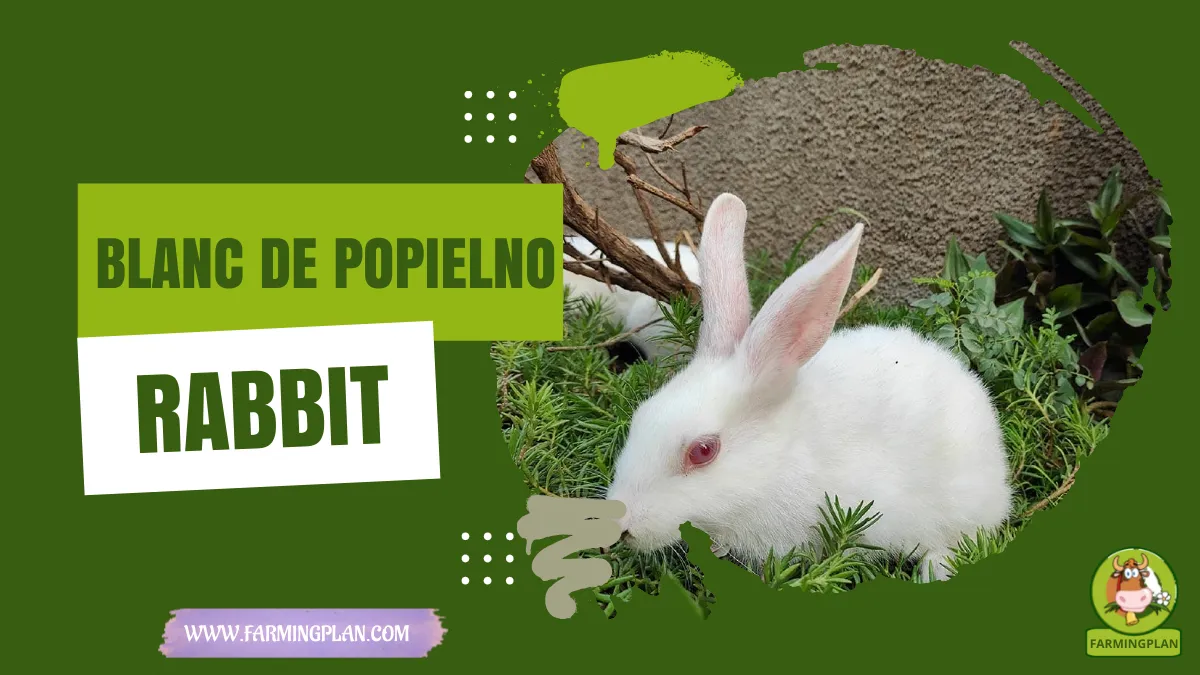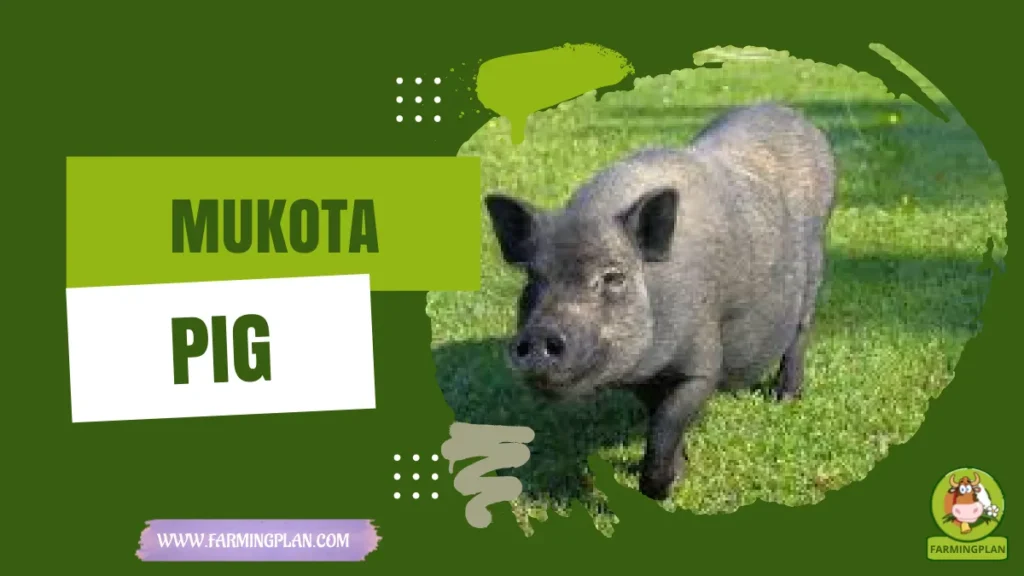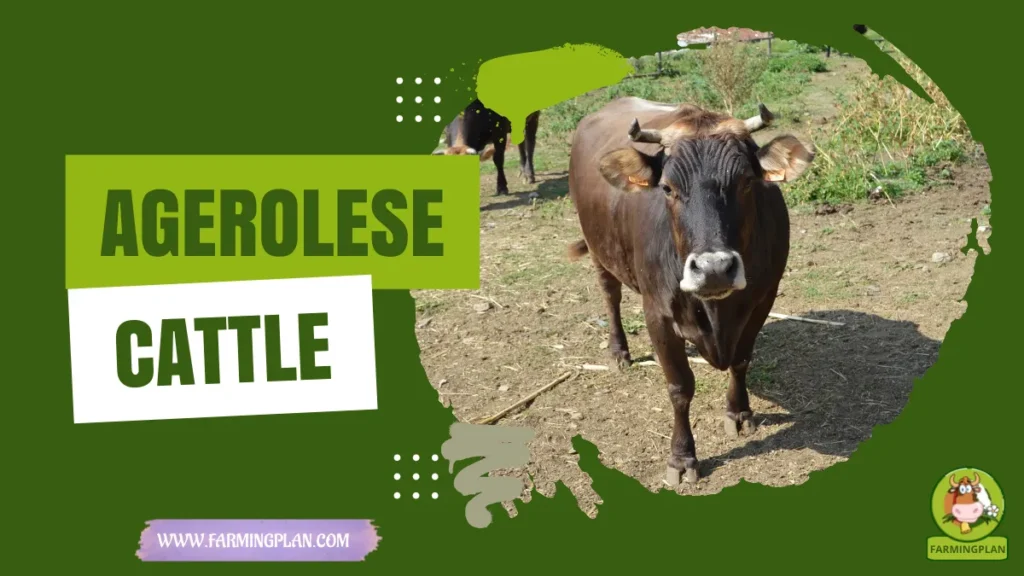If you’ve never heard of the Blanc de Popielno Rabbit, you’re not alone—but you’re in for a treat! This rare, snow-white beauty has quietly charmed its way into the hearts of rabbit lovers across the globe. Originally bred in Poland, the Blanc de Popielno is known for its calm nature, snowy coat, and delightful presence. Whether you’re a breeder, a hobbyist, or just love unique rabbit breeds, this article is your friendly guide to everything about this underrated gem. I’ll walk you through its history, features, care needs, and even a step-by-step guide to raising one. Let’s dive into the world of the Blanc de Popielno!

History & Origin of Blanc De Popielno Rabbit
The Blanc de Popielno Rabbit has a fascinating history that sets it apart from other breeds. Hailing from the quaint village of Popielno in Poland, nestled near the Mazury Lakes, it was developed in the 1950s by Polish scientists at the Polish Academy of Sciences. Their focus on natural selection and resilience led to the creation of a hardy, albino rabbit that could thrive in semi-wild conditions.
Interestingly, the breed started as a semi-wild experiment, living freely in a forest reserve to promote self-sufficiency and health. Over time, the Blanc de Popielno proved to be both docile and adaptable. Though still quite rare outside its native region, it’s slowly gaining attention in breeding circles worldwide. The breed shares some characteristics with the Blanc de Hotot and Blanc de Bouscat, but its origin story and natural selection roots make it uniquely fascinating.
Read More: Continental Giant White Rabbit – The Gentle Giant You’ll Love
Characteristics
This rabbit is a vision in white! As its name suggests, the Blanc de Popielno is completely white with striking ruby-red eyes, making it a classic albino breed. Its coat is thick, plush, and smooth, giving it that fluffy cloud appearance rabbit lovers can’t resist. Adult rabbits weigh between 4 and 5 kg (8.8 to 11 lbs), which places them in the medium-to-large category. Their body is muscular yet graceful, and they have broad heads with upright ears that stay alert.
Some even say they resemble a snowy version of the Havana rabbit in body type, though they’re a bit larger and heavier. One standout feature? Their dense guard hairs and soft undercoat make grooming easier, even for new owners. They’re not prone to matting like long-haired breeds. You’ll find they look a bit like a mix between a French White Rabbit and a Beige rabbit in fur texture—but with that signature Popielno touch.
Nature & Temperament
One thing I love most about the Blanc de Popielno is how gentle and relaxed they are. These rabbits are calm by nature and rarely show signs of aggression. They’re also intelligent, making them easy to train for basic commands or even to use a litter box. The Blanc de Popielno Rabbit’s gentle nature and relaxed demeanor make it an ideal companion for families.
They enjoy gentle handling and make wonderful companions for children and elderly owners. Their laid-back vibe is perfect for family homes, and they also thrive in small hobby farms. Even though they’re chill, these rabbits are curious explorers. Please provide a few rabbit toys, cardboard tunnels, or digging boxes, and watch their personalities bloom. They’re not high-strung like some smaller breeds, which makes them great for first-time rabbit owners.
Food & Diet of Blanc De Popielno Rabbit
Feeding a Blanc de Popielno Rabbit is straightforward. Like most domestic rabbits, their diet should be based on high-quality hay—this is non-negotiable. Hay keeps their digestive system healthy and their teeth in check. You’ll also want to provide a daily mix of fresh veggies like romaine lettuce, cilantro, and parsley. Avoid iceberg lettuce—it’s not great for rabbits.
I usually toss in a few slices of carrot or apple for a treat but never overdo it. Fruit should be a once-in-a-while snack. Pellets are helpful, too, especially if you choose a high-fiber, low-protein option. Make sure they have unlimited access to clean water. And here’s a tip: avoid giving them too many starchy foods like corn or bread. Their sensitive tummies won’t thank you.
Usage & Purpose of Blanc De Popielno Rabbit
These rabbits are mainly kept as pets or breeding stock for enthusiasts. Their calm nature and lovely appearance make them a favorite for family pets. They’re also used in breeding programs that aim to preserve rare European rabbit genetics. In some parts of Europe, Blanc de Popielno rabbits are raised for meat due to their decent size and fast growth.
However, in many circles—especially among rabbit lovers and hobby breeders—they’re treasured more for their companionship than utility. They do not usually show rabbits in the traditional sense, like the Checkered Giant or British Rabbit Council stars, but some niche breed clubs and fanciers are starting to spotlight them. That’s good news for rabbit diversity!
Special Features of Blanc De Popielno Rabbit
The Blanc de Popielno Rabbit boasts a few unique traits that truly set it apart. Its origin in a natural forest reserve makes it one of the few domestic rabbit breeds developed through semi-wild conditions, a fact that never fails to intrigue enthusiasts. Their self-sufficiency is impressive. These rabbits are hardy, don’t fall sick easily, and can handle temperature shifts better than most domestic breeds.
They’re also great for free-range setups or semi-outdoor hutches if you live in a moderate climate. Another special trait is their longer lifespan—typically 8 to 10 years with proper care. That’s a little longer than average for a rabbit of this size. Combined with their affectionate personality, they really make for a long-term friend.
Read More: Danish Landrace Pig – The Ultimate Bacon Breeding Powerhouse
Health Issues & Prevention of Blanc De Popielno Rabbit
Luckily, the Blanc de Popielno is pretty healthy overall, thanks to its natural selection background. But, like all rabbits, they’re still prone to certain issues. Common concerns include overgrown teeth, digestive problems like GI stasis, and ear mites. Watch out for sudden appetite changes, unusual droppings, or signs of lethargy. Prompt vet visits are a must if you spot something off.
Prevention is key. Make sure their diet includes enough fiber, they get daily exercise, and you check their teeth and nails regularly. I also suggest vaccinations and parasite control, especially if your rabbit lives outdoors. Keep their hutch clean and dry to prevent respiratory issues and sore hocks. And always offer plenty of stimulation—it helps with mental health and reduces stress-related illness.
“Every Rabbit Deserves A Cozy Hutch, A Caring Hand, And A Slice Of Apple On A Sunny Day.”
Step-By-Step Pet Owner Care Guide
Caring for a Blanc de Popielno Rabbit can be a rewarding experience. Here’s my full care guide that I use on my own farm to keep these gentle fluffballs healthy and happy.
Step 1: Set Up The Perfect Hutch Or Enclosure
Your rabbit needs a secure, spacious home. Aim for at least 12 square feet of living space per rabbit. Use a wooden or wire hutch that protects from predators and weather. Include a hide box, straw bedding, and litter tray. I always make sure the hutch is off the ground to keep it dry. Indoors, use a large playpen or rabbit-proofed room with chew-safe furniture. Make sure the flooring isn’t slippery—carpet squares or straw mats help.
Step 2: Create A Feeding & Water Routine
Stick to a daily feeding schedule. Offer unlimited hay, one cup of fresh veggies per 5 lbs of body weight, and a quarter-cup of pellets. Use a ceramic bowl for food and a sipper bottle or water bowl that won’t tip. I always clean water bowls daily and store fresh greens in a fridge drawer marked “bunny-only.” Trust me, they learn where the treats come from fast!
Step 3: Grooming & Handling
Blanc de Popielno rabbits have manageable coats, but weekly brushing helps reduce shedding. Check their nails every two weeks and clip as needed. Always lift your rabbit by supporting the rear and chest—not by the ears. Use handling time for bonding. Talk softly, pet gently, and reward calm behavior. It builds trust and makes vet visits easier later.
Step 4: Daily Exercise & Enrichment
These rabbits love space to move. Give them supervised time in a rabbit-safe area indoors or a predator-proof outdoor run. They’ll do happy binkies (yes, that’s a thing!) and dig in soft soil. Rotate toys weekly—cardboard castles, foraging puzzles, and tunnels are all hits. Social interaction is also key. Don’t let them get lonely.
Step 5: Monitor Health & Schedule Vet Visits
Keep track of appetite, droppings, and energy levels. Weigh your rabbit monthly. If anything seems off, contact a rabbit-savvy vet. Annual checkups help catch issues early. Also, consider microchipping your rabbit. It’s becoming more common and helps if they escape or get lost.
Expert Tips & Best Practices
- Always provide hay 24/7 – It’s their number one health booster.
- Invest in a secure outdoor run – They love fresh air and safe digging.
- Use a litter box – These rabbits are surprisingly easy to train.
- Bond them with another rabbit – They’re social and thrive with company.
- Rotate toys – Keeps them mentally stimulated and avoids boredom.
FAQs
Are Blanc de Popielno rabbits good pets for children?
Yes! They’re calm, gentle, and large enough to handle without being too fragile, making them perfect for families.
Do Blanc de Popielno rabbits require a lot of grooming?
Not really. Their coat is low-maintenance compared to long-haired breeds. A weekly brush usually does the trick.
How long do Blanc de Popielno rabbits live?
With proper care, they can live 8 to 10 years, which is quite long for their size.
Are Blanc de Popielno rabbits easy to train?
Yes! They’re smart and respond well to gentle training. Litter box use and basic commands are totally doable.
Can I keep them outdoors?
Yes, as long as the hutch is predator-proof and weather-protected. They’re hardy but still need a safe, dry space.
Conclusion
From their forest-born roots to their cuddly white coats and peaceful nature, the Blanc de Popielno Rabbit truly deserves more love in the rabbit world. They’re easy to care for, wonderful to handle, and bring a calming energy wherever they go. Whether you’re a first-time bunny parent or a seasoned breeder, this rabbit offers beauty, brains, and charm all in one fuzzy package. If this guide helped you discover a new favorite breed, go ahead and share it with your fellow rabbit lovers. Got questions or your own Popielno story to tell? Drop a comment below—I’d love to hear from you!


